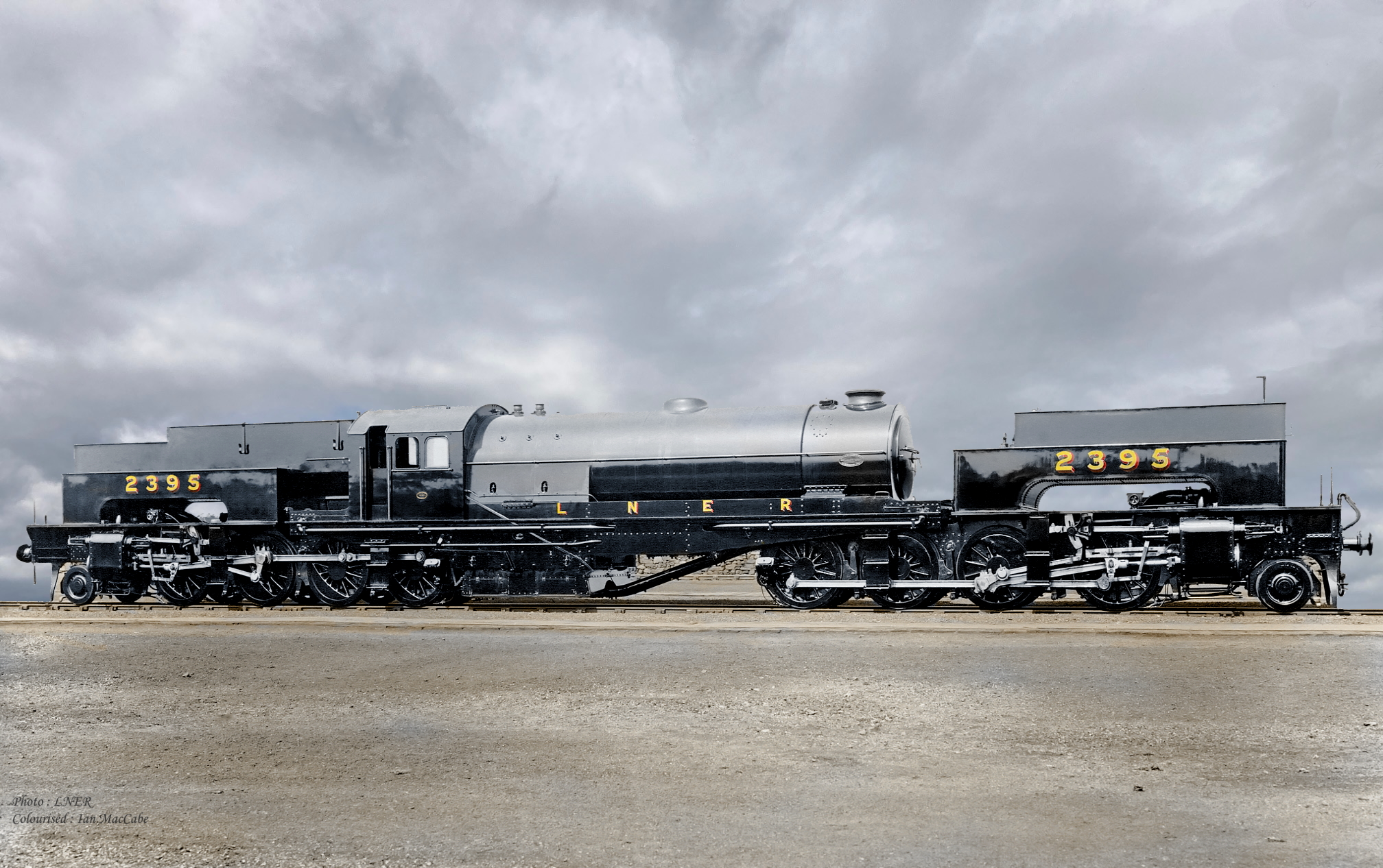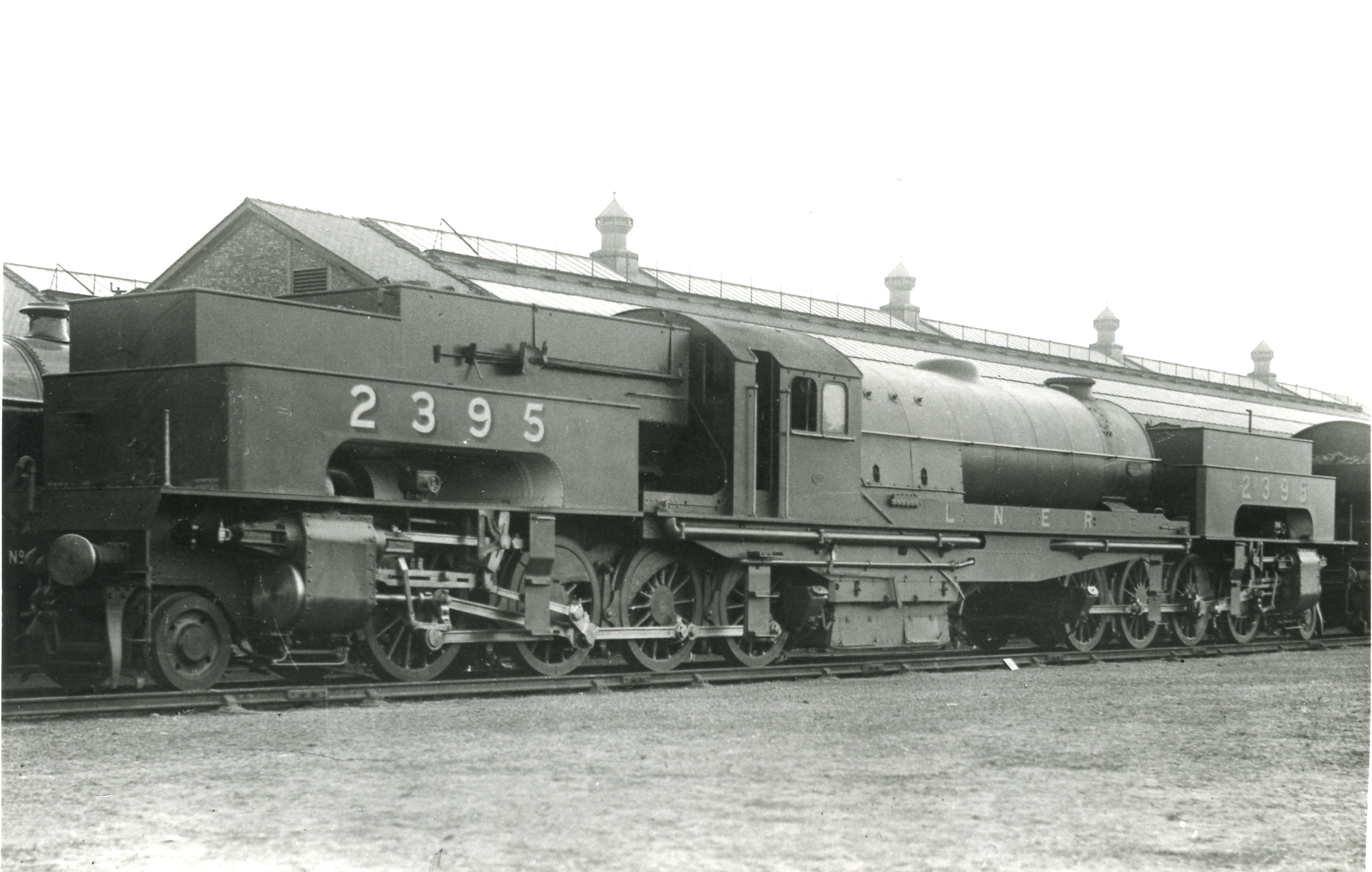Your cart is currently empty!
Sir Nigel Gresley
Sustaining the legacy

Class U1
The London and North Eastern Railway class U1 was a solitary 2-8-0+0-8-2 Garratt locomotive built in 1925 for banking coal trains over the Worsborough Bank on the Woodhead Route.

The London and North Eastern Railway class U1 was a solitary 2-8-0+0-8-2 Garratt locomotive built in 1925 for banking coal trains over the Worsborough Bank, a steeply graded line in South Yorkshire and part of the Woodhead Route. It was both the longest and the most powerful steam locomotive ever to run in Britain.
In 1910, the Great Central Railway initiated the design of a 4-cylinder Garratt. This was probably based on a pre-existing 0-8-0 design (Robinson), but over time the design evolved to use a 2-8-0 base (Robinson class O4) instead. This was approved by the LNER in 1924. Initially there were plans for two such engines, although only one was built. Between the initial order in 1924 and construction in 1925, the designed was amended by Gresley to use three-cylinders at each end, and to use some of the motion from his class O2 design.


No. 2395 was built by Beyer, Peacock & Co. and delivered to the LNER on the 21st June, ready to be displayed in shop grey at the Stockton & Darlington Centenary celebrations on 1st July 1925. After the celebrations it was painted in black, and entered service in August 1925. No. 2395 was the only Garratt ever to serve with the LNER. It was the first mainline Garratt to enter service in Britain, and it was the most powerful British locomotive of any type.
The class U1’s prime duty was to bank coal trains up the Worsborough Incline between Wentworth Junction and West Silkstone Junction. This incline was about 3.5 miles long at about 1 in 40. Typically coal trains of 60+ wagons arrived from Wath pulled by a class O4 with either a class O4 or a Robinson class L1 (later class L3) as a banker. No. 2395 would then come off its siding and push from behind the banker. Once at West Silkestone Junction, No. 2395 would then return to Wentworth Junction. The train would continue to the main Sheffield to Manchester main line at Penistone, whilst the other banker would usually remain until Dunford Bridge. Before No. 2395’s arrival, two class O4s were used as extra bankers, to give a total of three bankers.


The Silkstone tunnels were notoriously bad for air quality. The Garratt being at the back would suffer the worst. Respirators were tried which took air from near rail-level, however the locomotive crews objected to sharing equipment, and the trial stopped.
No. 2395 was renumbered as No. 9999 in March 1946, and then became No. 69999 following Nationalisation. In 1949, it was realised that a new boiler would be required soon. However, the forthcoming electrification scheme of the Manchester, Sheffield, and Wath lines meant that this would only be economic if alternative work could be found. No. 69999 was also tried out on the Lickey Incline in 1949-50 and again in 1955. Despite conversion to oil burning in 1952, neither trial was a success. No. 69999 was withdrawn in December 1955 and scrapped at Doncaster Works during early 1956 with a final mileage of 425,213 miles.

